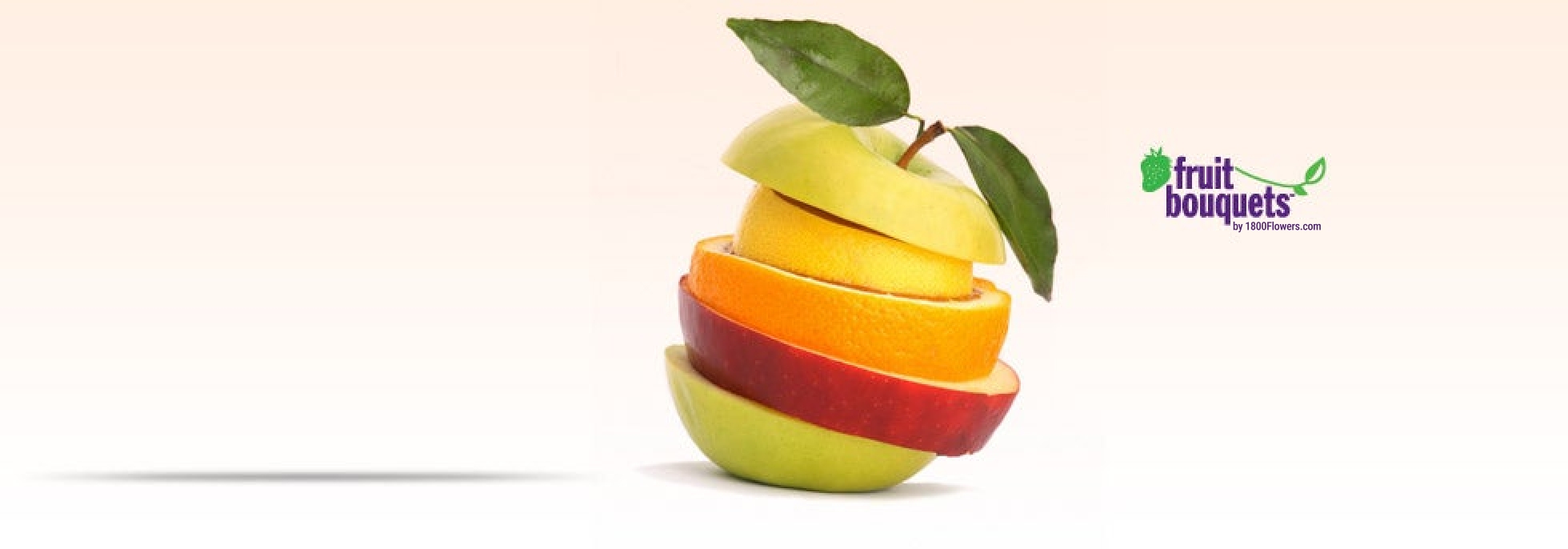- Thanksgiving
- Thanksgiving
Don't have an account?
Click Here
How to Select the Best Fruit
Do you want to get the most for your money when you go shopping for fruit? Here are a few handy tips to help assure that the fruit you bring home is fresh and delicious:
When selecting apples, focus on color. The apple should be bright and vibrant without browning near the core. The size is also a good indicator of its maturity and ripeness. The larger the apple, the riper it is. Apples should be firm to slightly hard and not easily bruised. Their skin should not be broken or show blemishes other than a few freckles in some varieties.
It's best to purchase bananas when they are 75% yellow, with a small amount of green at both ends. They should be plump, firm, brightly colored, without blemishes, but occasional brown spots on the skin are normal. There isn't any difference in the quality between small and large fruit. Bananas should be kept at room temperature. If you put them in the refrigerator they will stop ripening and soon turn black.
Blueberries should be a deep, purple-blue to blue black color with a silver frost Color is the best indicator of blueberry maturity and flavor, so avoid blueberries that are green. When buying fresh blueberries, select firm, plump berries in dry, unstained containers. Keep them dry, as moisture accelerates decay. Reddish berries are not ripe, but may be used in cooking.
The netting on the cantaloupe, the raised surface all around the melon, should cover the melon completely. Avoid very small cantaloupes, less than 5 inches in diameter, and ones with a large bald or smooth spot on their surface. However, it's all right if one side of the netting is bleached from where the melon touched the ground. Look for cantaloupes that have a smooth stem end or "full slip", illustrating that melon has detached from the stem of the plant naturally.
Good quality honeydew melons have a creamy yellow color with pastel green flesh. When fully ripe, the skin will have a slightly waxy feel. Honeydews should be firm with a small amount of softness at the stem end. With honeydews, bigger is often better. Those weighing about 5 pounds will have the best flavor. If you shake the melon and can hear seeds rattling, it means the melon is overripe. Avoid melons that are too firm, too soft, have dark blemishes on their skin or are green-colored. Aroma is also helpful in picking a ripe melon–if it smells good, it will probably taste good.
Grapes are harvested only when fully ripe so they should always be ready to eat when you buy them. Use color as a guide to the sweetness of the fruit. Green grapes should have a yellow cast or straw color with a touch of amber, when fully ripe, not an opaque grassy green color. Red grapes should be a deep crimson, not a milky or pale red. Blue grapes should be darkly hued, almost black, not pale or tinged with green. You can always judge the freshness of grapes by the stem. The greener the stem, the fresher the grapes. Grapes should always be firmly attached to their stems. Before storing, remove any spoiled grapes with broken skins or browning from the bunch and keep refrigerated; they should keep a week to ten days. During storage, continue to remove any and all spoiled fruit. Grapes can also be frozen for as long as three months.
Pears are among the few fruits that improve after they're picked as long as they are picked fully mature, but not ripe. When selecting the perfect pear, look for pears that are firm, not soft, free of blemishes or bruises, with intact stems. To determine if your pear is ready to eat, apply gentle pressure to the stem end of the pear with your thumb and if it yields slightly it is ready. If your pears are hard, leave them out at room temperature and they will ripen in a few days to a week, depending on the maturity when purchased. Most pears show subtle changes in color as they ripen and some will develop a sweet fragrance.
Pineapples should look fresh with deep green leaves that show no yellowing, browning or dryness. It is important to select pineapples that are fully ripe since pineapples do not ripen or get any sweeter after they are picked. To test for ripeness tug at the inner leaves of the crown. If one comes out easily, the pineapple is ready to eat. Another important test is the smell. Ripe pineapples should give off a good, fresh tropical smell. Avoid pineapples that give off an unpleasant odor or have any discoloration of the skin. Also avoid pineapples that have soft spots and dark or watery looking eyes. The eyes of the pineapple are those thorny studs within the puffy squares of the skin.
Strawberries are picked at their peak and do not ripen after harvesting. Therefore you should select berries that are bright red in color that have a natural sheen. Make sure the leaves are green and fresh looking. If boxed in cardboard or other paper products, pay particular attention to any dampness and/or staining, especially at the bottom of the container. This may be evidence of significantly overripe, even decaying fruit. Store strawberries in the refrigerator in a single layer on a paper towel in a moisture proof container. Eat them within 48 - 72 hours, or save them in the freezer.